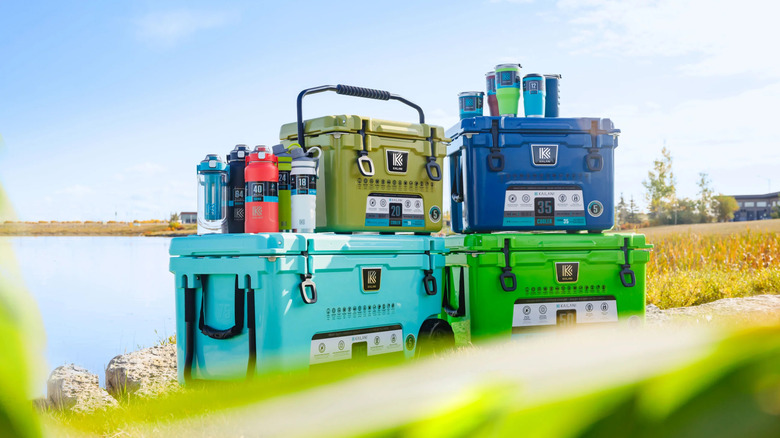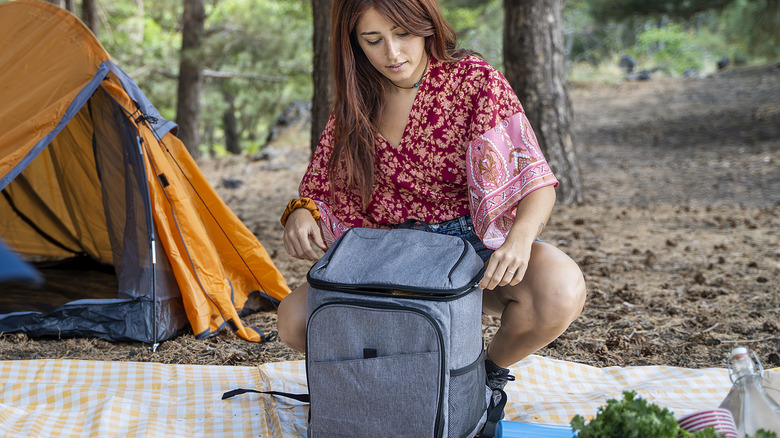Hard Vs. Soft-Sided Coolers: How Do They Differ?
The difference between hard and soft coolers goes beyond just looks. They perform very different roles. Hard-sided coolers are tough. They're made from thick plastic with dense insulation inside, usually with a tight-sealing lid that locks in cold air. Top-quality options from a big brand like Igloo can hold ice for five to seven days. They're also stackable and sturdy. You can sit on them, tie them down in the truck, or use them as a cutting board in camp.
Soft-sided coolers, on the other hand, are made for speed and comfort. They're lighter, flexible, and easier to carry. And some like the Yeti Hopper M30 sling over your shoulder like a bag. They won't hold ice for days, but they'll keep drinks and snacks cold for the afternoon. And they're easy to store. Fold one up, toss it in a trunk, and forget about it until next time. The best choice for you depends on your trip.
When hard coolers make more sense
If you're going out for more than a few hours or storing anything that really can't warm up, hard coolers become the better option. It's not only about the extra insulation — they're built for situations where keeping things cold is non-negotiable. Hard coolers use thick-walled plastic and high-density foam or airless insulation. Some, like Yeti Coolers, add freezer-grade gaskets to seal in cold air. That's what makes them the go-to for multi-day hunting trips, deep-sea fishing, or long off-grid cabin stays.
When the ice lasts for three to seven days, you're not just cooling your drinks, you're preserving your food. Some hard coolers are certified bear-resistant, meaning the design has been tested to keep wildlife out. If you're out in the wild, that added security makes a difference. Yes, hard coolers are heavy. Yes, they take up space. But that's the tradeoff for reliability you can count on. If the weather's hot or the trip is long, soft-sided coolers can fall short fast.
Where soft-sided coolers shine
Hard coolers can feel like overkill. Sometimes you just want to pack some snacks and get moving without having to drag along a whole tank in the name of a hard cooler. That's where soft-sided coolers earn their place. They're simple, portable, and built for the kind of trips most people take every weekend. A soft cooler won't win a contest for ice life. You're looking at six to 12 hours of decent cooling, depending on the model and weather, although a few models can maintain cold temperatures for longer. But several hours is usually enough when you're heading to the park, beach, or back of a car for a short trip.
They also win big on convenience. Most soft coolers weigh very little and collapse flat when they're empty. Some have waterproof linings. Others come with backpack straps or shoulder slings so you can move hands-free. And when you're done, you can simply wipe it out, fold it down, and stash it away in a drawer. Soft-sided coolers aren't meant for extreme conditions. If you need long-lasting cold, hard coolers win. If it's about portability and ease, soft coolers get the job done.


